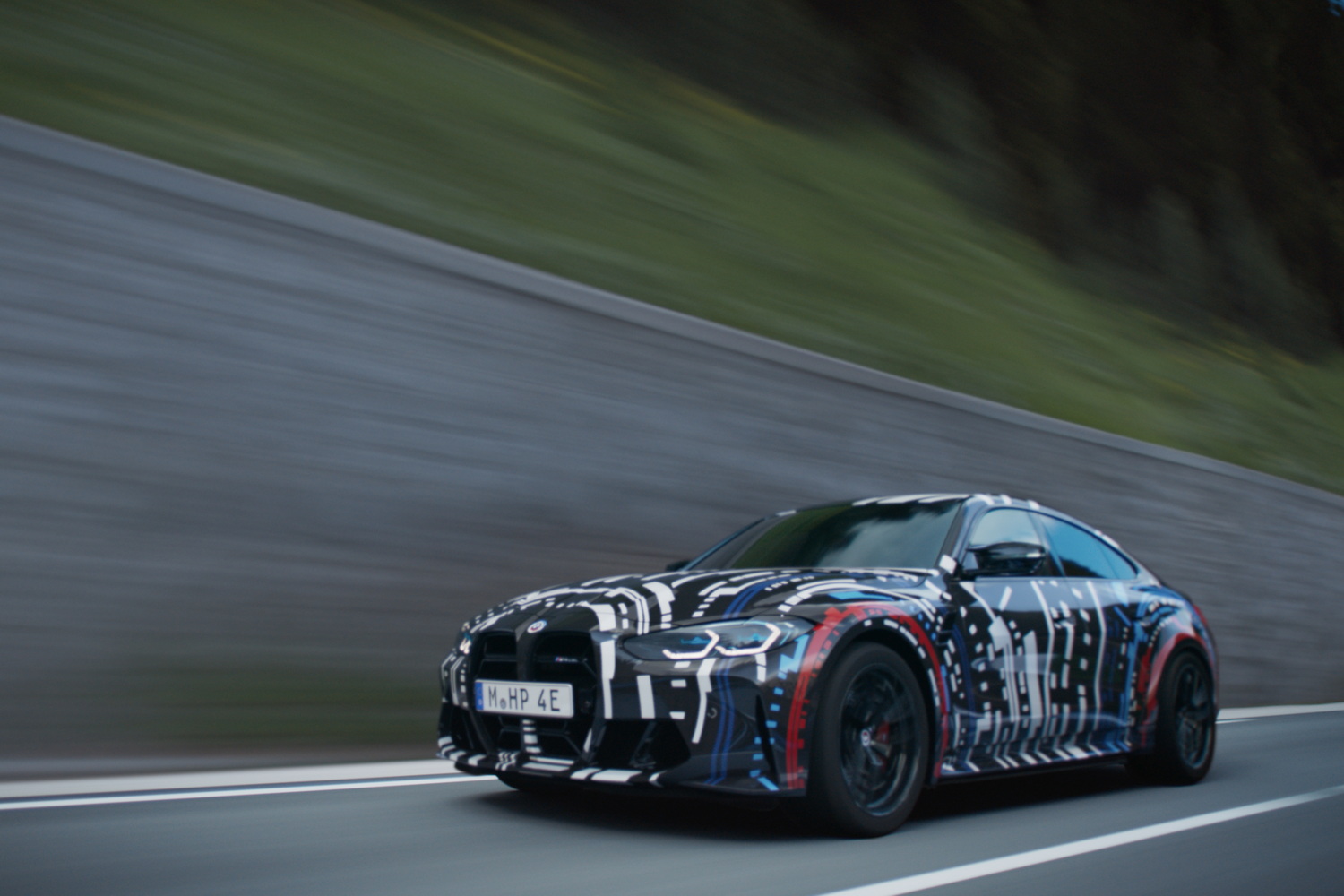BMW's high-performance M division has begun testing a range of new electric drive and chassis control systems using a specially developed one-off test mule.
The vehicle, the firm says, is in the process of proving the viability of a raft of new software and hardware systems "designed for future, fully-electric high performance cars".
The prototype is based on the BMW i4 M50, though with a visual makeover that includes bulging wheelarches and wider tracks front and rear.
Four motors
Beneath the modified Gran Coupe body (wider to accommodate a new axle design currently on test) lies four electric motors, making the mule all-wheel drive, and the fact that all four wheels are driven by separate electric motors opens up a whole new world of performance possibilities.
The ability to distribute torque precisely, variably and almost instantaneously to any combination of the four wheels, said the firm, could result in positive driving dynamics hitherto unattainable using either combustion power or conventional electric drivetrains.
"Electrification opens up completely new degrees of freedom for us to create M-typical dynamics," says Dirk Häcker, head of development at the M division. "And we can already see that we can exploit this potential to the maximum, so that our high-performance sports cars will continue to offer the M-typical and incomparable combination of dynamics, agility and precision in the locally emission-free future."
Computer says go
None of that fast and variable torque distribution, however, would be possible without the use of some pretty competent and advanced computer systems so, as well as the four-motor set-up, a new central control unit to dish out that power is also being tested.
Depending on the drive mode and throttle input, the central control unit calculates the ideal way to transmit power to the road within milliseconds, taking into account the pedal position, steering angle, longitudinal and lateral acceleration, wheel speeds and other parameters. The results of those sums are then sent to the four motors, which translate them at the wheels into the fastest way to get around a corner or to escape from a tricky slide.
Although the technology has been tested through simulations and in laboratories, this new test mule is the first practical, in-car test of the new power distribution system, and the interior of the mule is packed with all kinds of measuring equipment to assess how well everything is working and to provide useful data to the engineers back at base.
Thus far, says BMW, the results have been positive, and the sensitivity with which the system can distribute the torque allows testers to achieve higher cornering speeds than a car without the four-motor system, even on wet or snowy roads. Understeer, for example, is reduced, with the control unit sending power to the outside rear wheel parallel to the steering angle. Energy recuperation is possible too right up to the car's dynamic limits, with all four motors feeding power back into the battery under heavy braking and cornering.
Big year for M
This is a big year for the M division, marking its 50th anniversary with the launch and unveiling of several important new models.
"On our anniversary, we are not only looking back, but above all also looking forward," said Franciscus van Meel, chairman of BMW's board of management.
"Before the end of the year, production of the BMW XM, our first high-performance car featuring a V8 M hybrid drive, will commence. Together with our fans all over the world, we are also looking forward to our entry into the LMDh category of the North American IMSA endurance racing series, in which we will also be competing with an eight-cylinder hybrid turbo engine in Daytona and at other events in 2023, as well as in the WEC racing series at Le Mans a year later."

